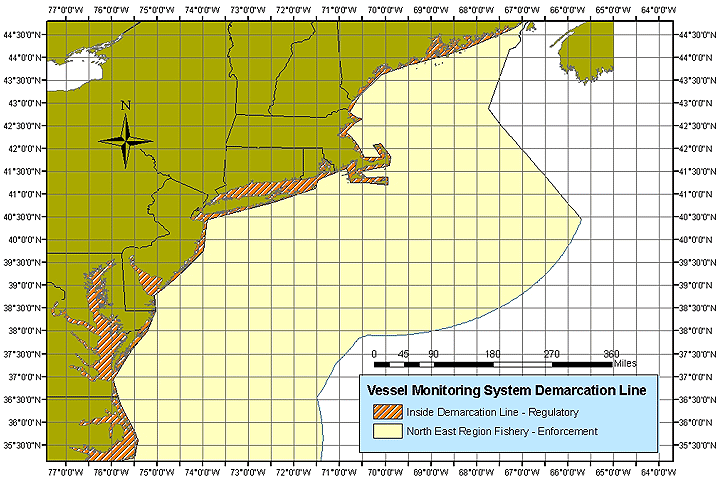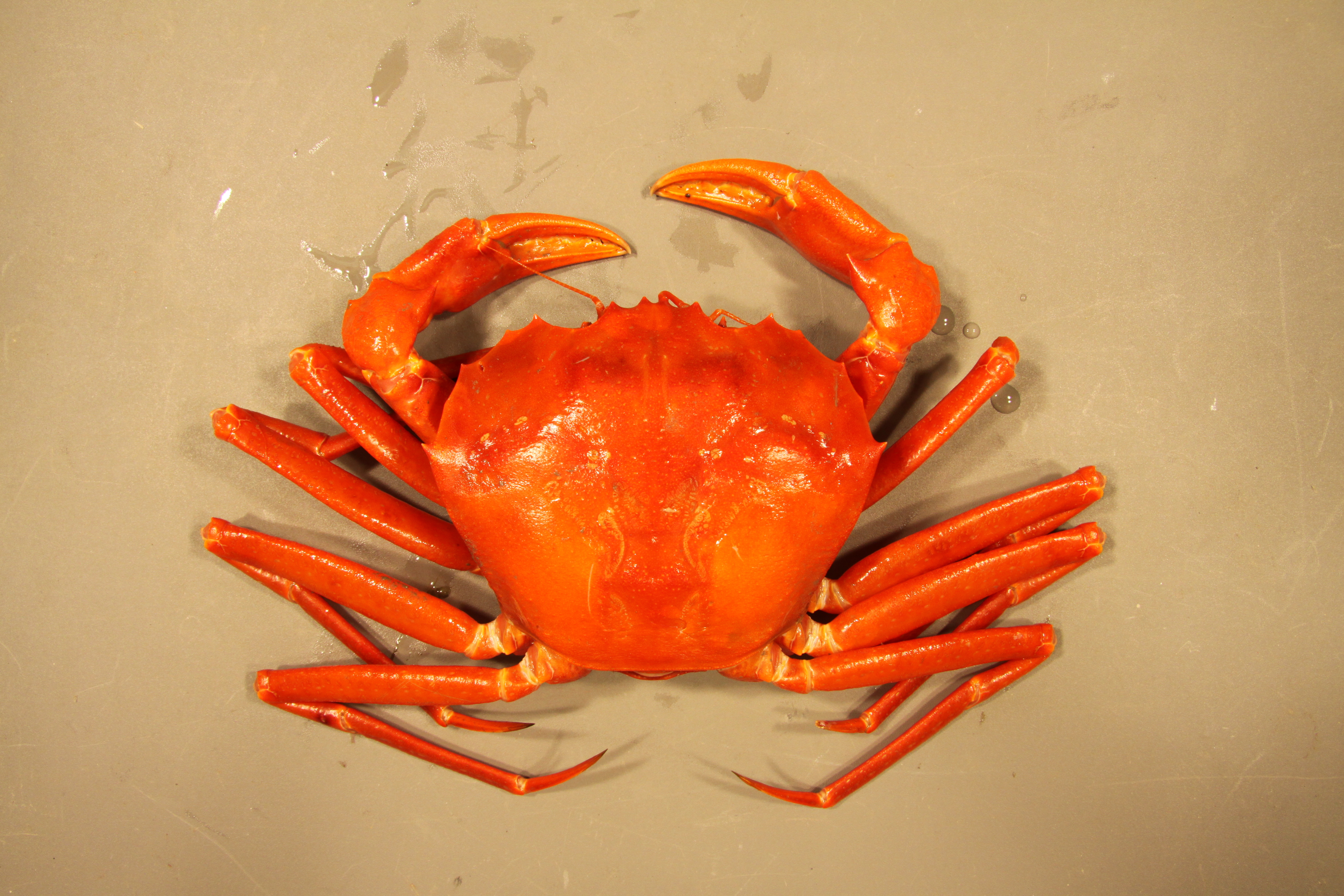|
Frank R. Lautenberg Deep-Sea Coral Protection Area
Frank R. Lautenberg Deep-Sea Coral Protection Area is an offshore marine protected area for deep-sea corals off the coast of the Mid-Atlantic states of the United States. On September 26, 2016, the National Oceanic and Atmospheric Administration (NOAA) Fisheries and the Mid-Atlantic Fishery Management Council proposed a final rule to designate a large offshore protected area for deep-sea corals in the Mid-Atlantic. The rule took effect on January 13, 2017. The final rule was named in honor of Senator Frank Lautenberg, a U.S. Senator from New Jersey responsible for many ocean conservation policies. Location Targeted areas include areas of known or highly likely coral presence in underwater canyons or slope areas along the edge of the continental shelf of the United States. The deep-sea coral protection area includes the continental shelf/slope break off the Mid-Atlantic states (New York to North Carolina) to the border of the U.S.'s Exclusive Economic Zone. It starts at a depth o ... [...More Info...] [...Related Items...] OR: [Wikipedia] [Google] [Baidu] |
Marine Protected Area
Marine protected areas (MPA) are protected areas of seas, oceans, estuaries or in the US, the Great Lakes. These marine areas can come in many forms ranging from wildlife refuges to research facilities. MPAs restrict human activity for a conservation purpose, typically to protect natural or cultural resources. Such marine resources are protected by local, state, territorial, native, regional, national, or international authorities and differ substantially among and between nations. This variation includes different limitations on development, fishing practices, fishing seasons and catch limits, moorings and bans on removing or disrupting marine life. In some situations (such as with the Phoenix Islands Protected Area), MPAs also provide revenue for countries, potentially equal to the income that they would have if they were to grant companies permissions to fish. The value of MPA to mobile species is unknown. There are a number of global examples of large marine conservation are ... [...More Info...] [...Related Items...] OR: [Wikipedia] [Google] [Baidu] |
Beam Trawl
Bottom trawling is trawling (towing a trawl, which is a fishing net) along the seafloor. It is also referred to as "dragging". The scientific community divides bottom trawling into benthic trawling and demersal trawling. Benthic trawling is towing a net at the very bottom of the ocean and demersal trawling is towing a net just above the benthic zone. Bottom trawling can be contrasted with midwater trawling (also known as pelagic trawling), where a net is towed higher in the water column. Midwater trawling catches pelagic fish such as anchovies and mackerel, whereas bottom trawling targets both bottom-living fish (groundfish) and semi-pelagic species such as cod, squid, shrimp, and rockfish. Trawling is done by a trawler, which can be a small open boat with only or a large factory trawler with . Bottom trawling can be carried out by one trawler or by two trawlers fishing cooperatively (pair trawling). Global catch from bottom trawling has been estimated at over 30 million tonnes ... [...More Info...] [...Related Items...] OR: [Wikipedia] [Google] [Baidu] |
Vessel Monitoring System
Vessel Monitoring Systems (VMS) is a general term to describe systems that are used in commercial fishing to allow environmental and fisheries regulatory organizations to track and monitor the activities of fishing vessels. They are a key part of monitoring control and surveillance (MCS) programs at national and international levels. VMS may be used to monitor vessels in the territorial waters of a country or a subdivision of a country, or in the Exclusive Economic Zones (EEZ) that extend 200 nautical miles (370.4 km) from the coasts of many countries. VMS systems are used to improve the management and sustainability of the marine environment, through ensuring proper fishing practices and the prevention of illegal fishing, and thus protect and enhance the livelihoods of fishermen. The exact functionality of a VMS system and the associated equipment varies with the requirements of the nation of the vessel's registry, and the regional or national water in which the vessel is ... [...More Info...] [...Related Items...] OR: [Wikipedia] [Google] [Baidu] |
Illex
''Illex'', commonly known as shortfin squids, is a squid genus in the family Ommastrephidae and the only member of the subfamily Illicinae. It contains four species: * ''Illex argentinus'', Argentine shortfin squid * '' Illex coindetii'', southern shortfin squid * ''Illex illecebrosus ''Illex illecebrosus'', commonly known as the northern shortfin squid, is a species of Neritic zone, neritic squids in the Family (biology), family Ommastrephidae. Squids of the genus Illex account for 65% of the world’s cephalopod captures. Il ...'', northern shortfin squid * '' Illex oxygonius'', sharptail shortfin squid References External links * Squid Cephalopod genera {{Squid-stub ... [...More Info...] [...Related Items...] OR: [Wikipedia] [Google] [Baidu] |
Chaceon Quinquedens
''Chaceon quinquedens'', commonly known as the red deep-sea crab, but sold as Atlantic deep sea red crab, or simply Atlantic red crab or red crab is a crab that lives in the Atlantic Ocean off the East Coast of the United States and Canada, from North Carolina to Nova Scotia. The crab is commercially fished as food. Since 2002, the species has been managed under the Atlantic Deep-Sea Red Crab Fishery Management Plan created by the New England Fishery Management council. The National Marine Fisheries Service has established an Acceptable Biological Catch (ABC) of 1,775 tons (3.91 million pounds) but average landings rarely exceed 930 tons (2.05 Million lbs) and average value of landings in 2016-2018 was $3.29 Million. The species resembles a snow crab from Alaska. However, they are actually members of the superfamily Portunoidea, or swimming crabs, so are more closely related to blue crabs ''Callinectes sapidus'', although they do not have the flattened fifth leg characteristic ... [...More Info...] [...Related Items...] OR: [Wikipedia] [Google] [Baidu] |
American Lobster
The American lobster (''Homarus americanus'') is a species of lobster found on the Atlantic Ocean, Atlantic coast of North America, chiefly from Labrador to New Jersey. It is also known as Atlantic lobster, Canadian lobster, true lobster, northern lobster, Canadian Reds, or Maine lobster. It can reach a body length of , and a mass of over , making it not only the heaviest crustacean in the world, but also the heaviest of all living arthropod species. Its closest relative is the European lobster ''Homarus gammarus'', which can be distinguished by its coloration and the lack of spines on the underside of the rostrum (anatomy), rostrum. American lobsters are usually bluish green to brown with red spines, but several color variations have been observed. Distribution ''Homarus americanus'' is distributed along the Atlantic Ocean, Atlantic coast of North America, from Labrador in the north to Cape Hatteras, North Carolina, in the south. South of New Jersey, the species is uncommon, and ... [...More Info...] [...Related Items...] OR: [Wikipedia] [Google] [Baidu] |
Recreational Fishing
Recreational fishing, also called sport fishing or game fishing, is fishing for leisure, exercise or competition. It can be contrasted with commercial fishing, which is professional fishing for profit; or subsistence fishing, which is fishing for survival and livelihood. The most common form of recreational fishing is angling, which is done with a rig of rod, reel, line, hooks and any one of a wide range of baits, as well as other complementary devices such as weights, floats, swivels and method feeders, collectively referred to as '' terminal tackles''. Lures are frequently used in place of fresh bait when fishing for predatory fishes. Some hobbyists hand-make custom tackles themselves, including plastic lures and artificial flies. Other forms of recreational fishing include spearfishing, which is done with a speargun or harpoon usually while diving; and bowfishing, with is done from above the water with archery equipments such as a compound bow or crossbow. Noodl ... [...More Info...] [...Related Items...] OR: [Wikipedia] [Google] [Baidu] |
Gill Net
Gillnetting is a fishing method that uses gillnets: vertical panels of netting that hang from a line with regularly spaced floaters that hold the line on the surface of the water. The floats are sometimes called "corks" and the line with corks is generally referred to as a "cork line." The line along the bottom of the panels is generally weighted. Traditionally this line has been weighted with lead and may be referred to as "lead line." A gillnet is normally set in a straight line. Gillnets can be characterized by mesh size, as well as colour and type of filament from which they are made. Fish may be caught by gillnets in three ways: # Wedged – held by the mesh around the body. # Gilled – held by mesh slipping behind the opercula. # Tangled – held by teeth, spines, maxillaries, or other protrusions without the body penetrating the mesh. Most often fish are gilled. A fish swims into a net and passes only part way through the mesh. When it struggles to free ... [...More Info...] [...Related Items...] OR: [Wikipedia] [Google] [Baidu] |
Longline Fishing
Longline fishing, or longlining, is a commercial fishing angling technique that uses a long ''main line'' with baited hooks attached at intervals via short branch lines called ''snoods'' or ''gangions''.Method and Apparatus for Long Line and Recreational Bait Fishing Patent application 20080202013. 28 August 2008. A snood is attached to the main line using a clip or swivel, with the hook at the other end. Longlines are classified mainly by where they are placed in the . This can be at the surface or at the bottom. Lines can also be set by means of an anchor, or left to drift. Hundreds or even thousands of baited hooks can hang from a single line. This can l ... [...More Info...] [...Related Items...] OR: [Wikipedia] [Google] [Baidu] |
Seine Fishing
Seine fishing (or seine-haul fishing; ) is a method of fishing that employs a surrounding net, called a seine, that hangs vertically in the water with its bottom edge held down by weights and its top edge buoyed by floats. Seine nets can be deployed from the shore as a beach seine, or from a boat. Boats deploying seine nets are known as seiners. Two main types of seine net are deployed from seiners: ''purse seines'' and ''Danish seines''. A seine differs from a gillnet, in that a seine encloses fish, where a gillnet directly snares fish. Etymology The word ''seine'' has its origins in the Old English ''segne'', which entered the language via Latin ''sagena'', from the original Greek σαγήνη ''sagēnē'' (a drag-net). History Seines have been used widely in the past, including by Stone Age societies. For example, the Māori used large canoes to deploy seine nets which could be over a kilometer long. The nets were woven from green flax, with stone weights and light wood o ... [...More Info...] [...Related Items...] OR: [Wikipedia] [Google] [Baidu] |
Hydraulic Dredge
Hydraulics (from Greek language, Greek: Υδραυλική) is a technology and applied science using engineering, chemistry, and other sciences involving the mechanical properties and use of liquids. At a very basic level, hydraulics is the liquid counterpart of pneumatics, which concerns gases. Fluid mechanics provides the theoretical foundation for hydraulics, which focuses on the applied engineering using the properties of fluids. In its fluid power applications, hydraulics is used for the generation, control, and transmission of Power (physics), power by the use of pressure, pressurized liquids. Hydraulic topics range through some parts of science and most of engineering modules, and cover concepts such as pipe Volumetric flow rate, flow, dam design, fluidics and fluid control circuitry. The principles of hydraulics are in use naturally in the human body within the vascular system and erectile tissue. Free surface hydraulics is the branch of hydraulics dealing with free ... [...More Info...] [...Related Items...] OR: [Wikipedia] [Google] [Baidu] |






_-_Ystad-2018.jpg)
.jpg)
.jpeg)